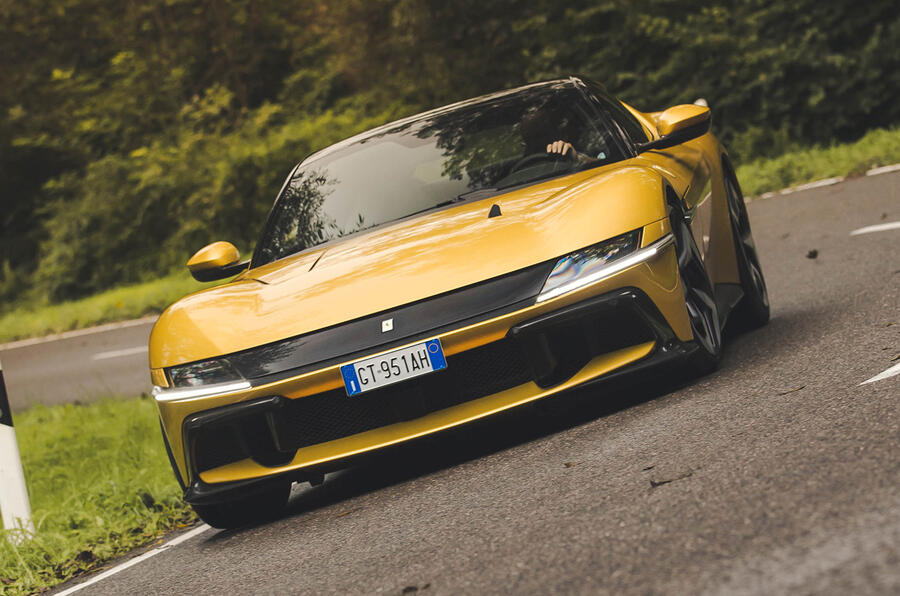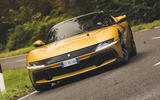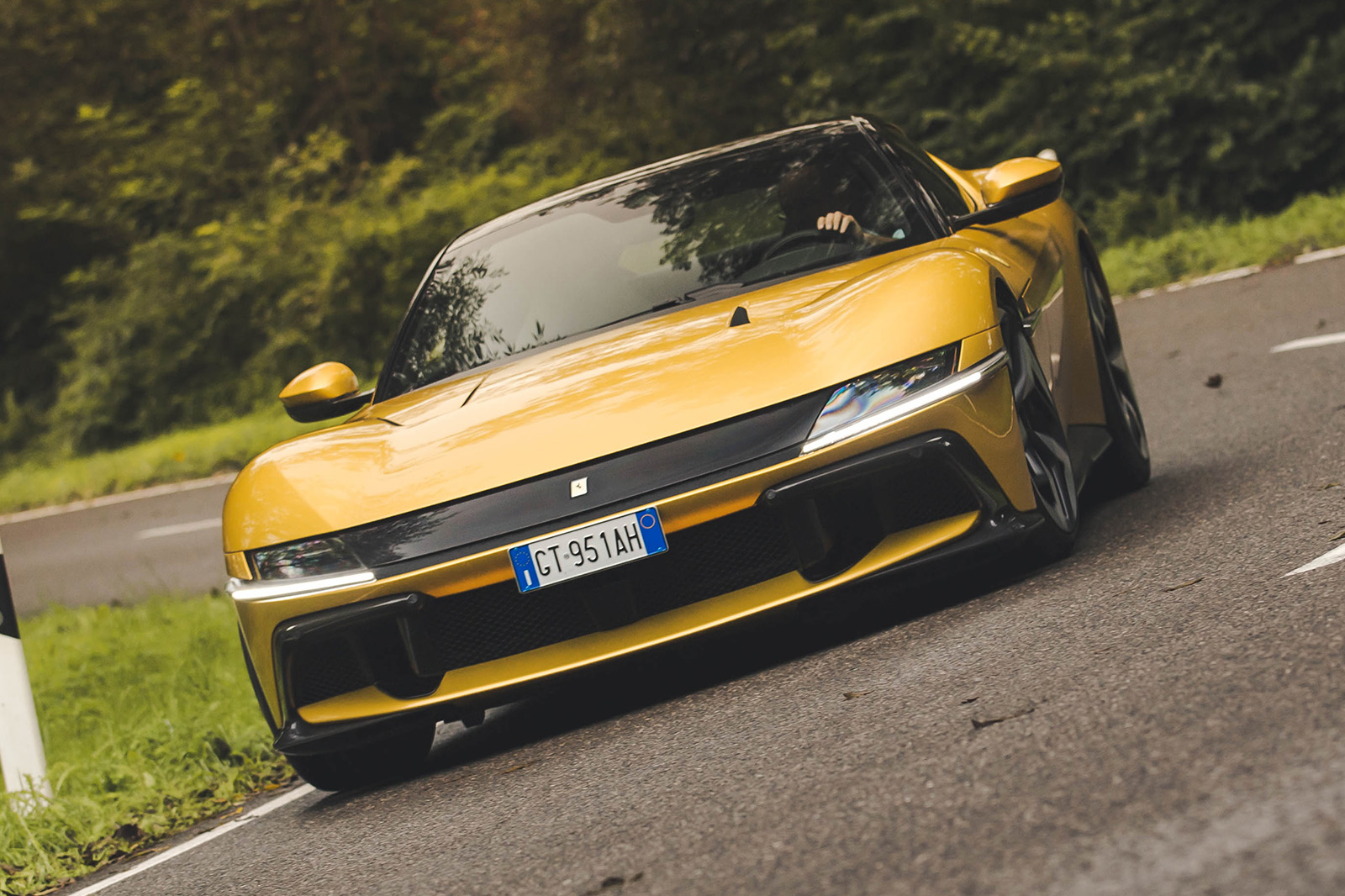Lifting the huge one-piece bonnet not only reveals how far back the engine sits but also exposes the tyres, to make the car look a little racy.
The engine hardware is extreme itself: its last outing was in the 812 Competizione and it makes the same 819bhp at 9250rpm, with a 9500rpm redline, although minor installation changes have reduced peak torque by 10lb ft to 500lb ft, made at 7250rpm.
Having eight speeds rather than seven has added a few kilos, although Ferrari claims the centre of gravity is lower. It quotes only a dry weight, of 1560kg. We put an 812 Superfast on the scales, fuelled, at 1725kg.
The internal gear ratios are the same as in the SF90 and 296 GTB, but a lower final drive means 5% shorter ratios in low gears than in the 812 Superfast or 812 Competizione – not cars unendowed with performance.
The acceleration figures, then – 2.9sec to 62mph and 7.9sec to 124mph – remain the same as the 812 Superfast's, because there’s a limit to what rear tyres can do with 819bhp that they couldn’t with 789bhp.
And the character and delivery remain every bit as special as in the 812 Competizione. In a world where not many manufacturers can be committed to naturally aspirated V12s, any that are left are fabulous.
It’s smooth because all engines with multiples of straight six cylinders are smooth, and it has to have light internals because it’s a 6.5-litre engine that revs to 9500rpm without tearing itself apart.
You can’t use it all on the road, clearly, and Ferrari’s engineers are aware this car needs to be enjoyable at speeds where it’s not breaking sweat. So they’ve modified the torque output in third and fourth gears between 2000rpm and 5000rpm, which is where they think drivers spend a lot of time on country roads. It has had peaks reduced in places flatten it, to be more linearly responsive in those areas.
It will still make peak torque in those gears. This isn’t a move like in the turbocharged 488 GTB, where only seventh gear made full torque, so that it still built up to something; it’s just management of the responses. They’re still as exceptional as anything not electric.
It’s bassy at low revs, resisting being a constant drone, tuneful through the mid-range where you will spend most of your time. The only disappointments about how it sounds and how it responds at high revs are how hard it is to find places where you can get there. Accelerative bursts last fractions of a second.
The gearbox is a dual-clutch unit, maybe the smoothest and fastest, and there’s an electronically controlled limited-slip differential, plus drive modes and ECUs to meld the whole caboodle together, which adjust not only those but also the by-wire braking system, active rear steering, variable stability control and slip control.









































